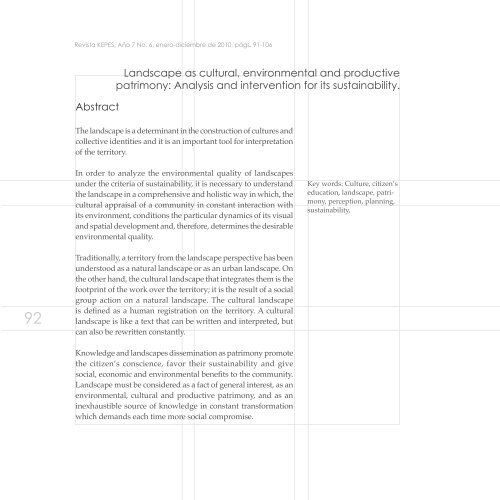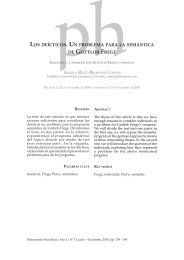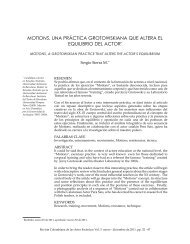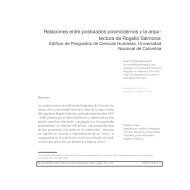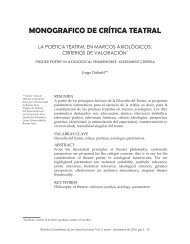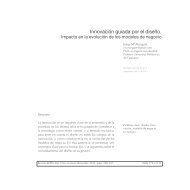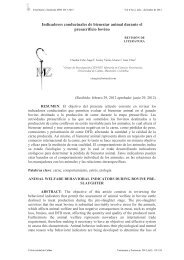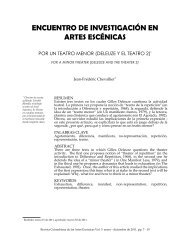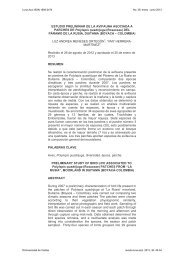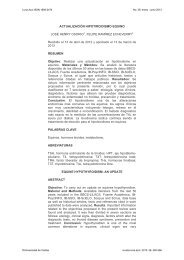El paisaje como patrimonio cultural, ambiental y productivo
El paisaje como patrimonio cultural, ambiental y productivo
El paisaje como patrimonio cultural, ambiental y productivo
You also want an ePaper? Increase the reach of your titles
YUMPU automatically turns print PDFs into web optimized ePapers that Google loves.
92<br />
Revista KEPES, Año 7 No. 6, enero-diciembre de 2010, págs. 91-106<br />
Abstract<br />
Landscape as <strong>cultural</strong>, environmental and productive<br />
patrimony: Analysis and intervention for its sustainability.<br />
The landscape is a determinant in the construction of cultures and<br />
collective identities and it is an important tool for interpretation<br />
of the territory.<br />
In order to analyze the environmental quality of landscapes<br />
under the criteria of sustainability, it is necessary to understand<br />
the landscape in a comprehensive and holistic way in which, the<br />
<strong>cultural</strong> appraisal of a community in constant interaction with<br />
its environment, conditions the particular dynamics of its visual<br />
and spatial development and, therefore, determines the desirable<br />
environmental quality.<br />
Traditionally, a territory from the landscape perspective has been<br />
understood as a natural landscape or as an urban landscape. On<br />
the other hand, the <strong>cultural</strong> landscape that integrates them is the<br />
footprint of the work over the territory; it is the result of a social<br />
group action on a natural landscape. The <strong>cultural</strong> landscape<br />
is defined as a human registration on the territory. A <strong>cultural</strong><br />
landscape is like a text that can be written and interpreted, but<br />
can also be rewritten constantly.<br />
Knowledge and landscapes dissemination as patrimony promote<br />
the citizen’s conscience, favor their sustainability and give<br />
social, economic and environmental benefits to the community.<br />
Landscape must be considered as a fact of general interest, as an<br />
environmental, <strong>cultural</strong> and productive patrimony, and as an<br />
inexhaustible source of knowledge in constant transformation<br />
which demands each time more social compromise.<br />
Key words: Culture, citizen’s<br />
education, landscape, patrimony,<br />
perception, planning,<br />
sustainability,


